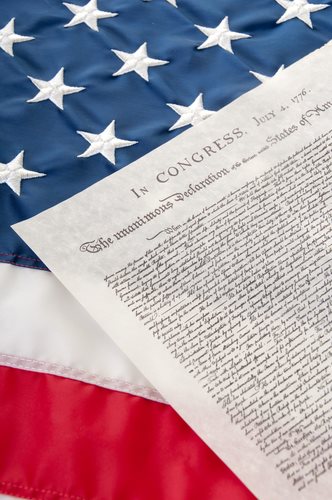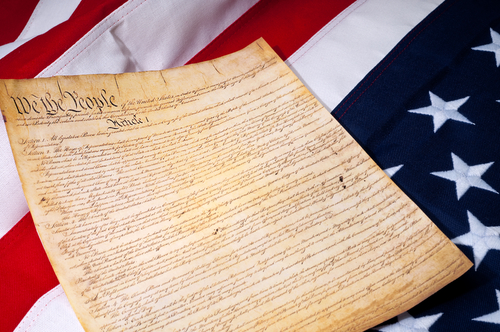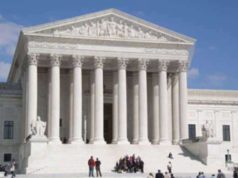
How Many Amendments to the Constitution?
The United States Constitution is the supreme law of the land, providing the basis for the government’s powers and the rights of its citizens. The Constitution is not a stagnant document and has evolved over time to reflect changing attitudes, societal norms, and the needs of the country. The amendments to the Constitution are a testament to the ability of the document to adapt to the inevitable changes that come with a growing democratic republic.
The history of the Constitution dates back to the Philadelphia Convention, where the Founding Fathers drafted the original document in 1787. The Constitution consists of seven articles, outlining the power of the three branches of government, defining the relationships between the national government and the states, and establishing the procedures by which the Constitution can be amended. The ratification of the original Constitution was a landmark moment in the history of the United States.
The Framers of the Constitution recognized that the document was not perfect, and they included a process by which the Constitution could be amended. The amendment process gives citizens the ability to change the Constitution as the country evolves, providing a mechanism for the people to influence the document and the political system. The process was intentionally made difficult to prevent the passage of frivolous or narrow amendments.
The Amendment Process
The process for amending the Constitution is outlined in Article V, and it is a two-step process. The first step is the proposal of an amendment, which can be done in two ways. The first method involves a two-thirds vote of both the House of Representatives and the Senate. The second method allows for a constitutional convention to be called by two-thirds of the state legislatures. The second method has never been used to successfully propose an amendment.
The second step in the amendment process is ratification. Once an amendment is proposed, it must be ratified by three-fourths of the state legislatures or by conventions in three-fourths of the states. The method of ratification is determined by Congress.
The Amendment Process in Practice
Over the years, the amendment process has been used to modify the Constitution. The first ten amendments were adopted in 1791, and they are known as the Bill of Rights. The Bill of Rights consists of the most fundamental rights afforded to citizens, including freedom of speech, religion, and the press, as well as the right to bear arms and the right to a fair trial.
Since the adoption of the Bill of Rights, the amendment process has been used 17 times, bringing the total number of amendments to the Constitution to 27. The process has allowed for the modification of the Constitution to ensure that it remains relevant in modern times.
The 11th Amendment
The 11th Amendment was ratified in 1795 and limits the power of federal courts to hear lawsuits brought against states by citizens of another state, foreign citizens, or entities. The amendment was passed in response to a Supreme Court decision that allowed suits to be filed against states in federal court.
The 12th Amendment
The 12th Amendment was ratified in 1804 and changed the process of electing the President and Vice President. The amendment requires electors to cast separate ballots for the President and the Vice President, making it more difficult for the parties to dominate both positions.
The 13th Amendment
The 13th Amendment was ratified in 1865 and abolished slavery, outlawing forced labor in the United States. The amendment was ratified after the Civil War and is arguably the most significant amendment to the Constitution.
The 14th Amendment
The 14th Amendment was ratified in 1868 and affirms the citizenship of all persons born or naturalized in the United States. The amendment prohibits states from denying citizens equal protection under the law and due process of law. The amendment was added to the Constitution in response to the chaotic post-Civil War period and the need for national unity.
The 15th Amendment
The 15th Amendment was ratified in 1870 and prohibits states from denying citizens the right to vote based on their race or color. The amendment was added to the Constitution to protect the voting rights of African Americans, who were frequently denied suffrage by discriminatory state laws.
The 16th Amendment
The 16th Amendment was ratified in 1913 and provides the federal government with the power to levy an income tax. The amendment was passed in response to the growing cost of government and the need for new sources of revenue.
The 17th Amendment
The 17th Amendment was ratified in 1913 and provides for the direct election of Senators by the people. Prior to the amendment, Senators were elected by the state legislatures. The amendment was passed in response to concerns about corruption in the state legislatures and a desire for a more democratic process.
The 18th Amendment
The 18th Amendment was ratified in 1919 and prohibited the manufacture, sale, and transportation of alcohol in the United States. The amendment was repealed by the 21st Amendment in 1933, highlighting the flexibility of the Constitution to adjust to changing social and political attitudes.
The 19th Amendment
The 19th Amendment was ratified in 1920 and grants women the right to vote. The amendment was added to the Constitution after decades of activism by suffragettes and is considered a milestone in the history of women’s rights.
The 20th Amendment
The 20th Amendment was ratified in 1933 and changes the date of the presidential and congressional inaugurations from March 4th to January 20th. The amendment was passed to reduce the time between the election and the inauguration and to respond to changes in transportation and communication technology.
The 21st Amendment
The 21st Amendment was ratified in 1933 and repealed the 18th Amendment, abolishing prohibition. The amendment was passed in response to widespread public dissatisfaction with the effects of prohibition and the rise of organized crime.
The 22nd Amendment
The 22nd Amendment was ratified in 1951 and limits the President to two terms in office. The amendment was passed in response to fears of the emergence of a “president for life” and to prevent the abuse of executive power.
The 23rd Amendment
The 23rd Amendment was ratified in 1961 and gives residents of the District of Columbia the right to vote in presidential elections. The amendment was passed to grant representation to residents of the nation’s capital, who were previously unable to participate in national elections.
The 24th Amendment
The 24th Amendment was ratified in 1964 and prohibits the use of poll taxes to prevent citizens from voting. The amendment was passed in response to the use of poll taxes to disenfranchise African Americans in southern states.
The 25th Amendment
The 25th Amendment was ratified in 1967 and outlines the procedures for presidential succession and the process for declaring a President unfit for office. The amendment was added to the Constitution in response to the assassination of President John F. Kennedy and concerns about the stability of the government.
The 26th Amendment
The 26th Amendment was ratified in 1971 and grants 18-year-olds the right to vote. The amendment was added to the Constitution in response to the growing number of young people serving in the military during the Vietnam War.
The 27th Amendment
The 27th Amendment was ratified in 1992 and deals with the compensation of members of Congress. The amendment prohibits Congress from raising its own pay during the current session of Congress and was initially proposed in 1789 but was not ratified until 203 years later.
Why So Few Amendments?
The process for amending the Constitution is intentionally difficult, requiring broad support from both the national and state governments. The fact that only 27 amendments have been adopted, despite the existence of the amendment process for over two centuries, speaks to the difficulty of amending the Constitution.
Additionally, the Constitution was written in a way that allowed for flexibility and adaptation to modern times. The Framers of the Constitution understood that future generations would need to be able to interpret the document in light of contemporary issues, and so provided the framework for how to do so. The Supreme Court has played an important role in interpreting the Constitution, allowing it to be adapted and modified over time without the need for formal amendments.
Final Thoughts
The Constitution and its amendments stand as a testament to the United States’ commitment to the rule of law, individual rights, and democratic governance. The amendment process has been used sparingly but effectively, allowing the Constitution to remain relevant and responsive to the changing needs of the country. The basic principles of democratic governance, as outlined in the Constitution, continue to serve as a beacon for those who seek to build a more just and equitable society.
In conclusion, the amendments to the Constitution play a critical role in shaping the most important document of the United States. The amendment process provides a mechanism for the document to continue to meet the needs of the country and its people. The Constitution serves as a timeless masterpiece that has adapted over time, making it a symbol of the evolving American values and the ideals they hold. Therefore, any potential amendment is a precious opportunity to keep the Constitution up to date with the shifting tides of society even in this day and age.
How Many Amendments to the Constitution?
As of February of 2011, 27 Constitutional Amendments currently exist; the First Amendment to the Constitution was adopted on September 25th, 1789 – the most recent Amendment to the Constitution was adopted on May 5th – 7th of 1992.
How Many Amendments to the Constitution Have Been Rejected?
Since the proposal – and subsequent passing – of the first 10 Amendments, which are known as the Bill of Rights, a total of 6 Amendments have been proposed and eventually denied:
Amendment Name: Congressional Appointment Amendment
Content of the Amendment: The regulation of the appointment process with regard to state representation; this Amendment proposes that a calculation with regard to this appointment exist at a rate of 1 representative per every 30,000 residents with regard to an individual state
Date of Proposal: September 25th, 1789
Current Status of the Amendment: Pending
Amendment Name: Titles of Nobility Amendment
Content of the Amendment: This Amendment proposes that any individual citizen of the United States of America be subject to forego their respective citizenship in the event that they are the recipient of a title or appointment from a country or nation other than that of the United States
Date of Proposal: May 1st, 1810
Current Status of the Amendment: Pending
Amendment Name: Corwin Amendment
Content of the Amendment: This Amendment prohibits the ability or jurisdiction allowed to Congress with regard to its respective involvement in matters concerning individual states; this Amendment was an attempt to allow slavery to remain legal within individual states wishing to permit it – however, the 13th Amendment subsequently abolished slavery on a national level
Date of Proposal: March 2nd, 1861
Current Status of the Amendment: Pending, but has been deemed contrary to the Constitution
Amendment Name: Child Labor Amendment
Content of the Amendment: This proposed Amendment allows Congress that ability to regulate, authenticate, and maintain jurisdiction over the employment of individuals under 18 years of age; upon ratification, this Amendment would allow Congress to overturn individual state legislature with regard to labor classified as ‘Child Labor’
Date of Proposal: June 2nd, 1924
Current Status of the Amendment: Pending
Amendment Name: Equal Rights Amendments
Content of the Amendment: This proposed Amendment ensures that upon ratification, gender will be considered immaterial with regard to all activities and opportunities taking place on both a state and national level; this Amendment allows Congress to enforce this legislation on both a gubernatorial, as well as state-level
Date of Proposal: March 22nd, 1972
Current Status of the Amendment: Expired between 1979 and 1982; however, certain individuals maintain that a lack of an expressed date of expression within the Amendment precludes it from expiration
Amendment Name: District of Columbia Voting Rights Amendment
Content of the Amendment: This proposed Amendment – upon ratification – would allow the District of Columbia the opportunity to appoint and maintain representation from an individual Electoral College
Date of Proposal: August 22nd, 1978
Current Status of the Amendment: Expired in 1985


























